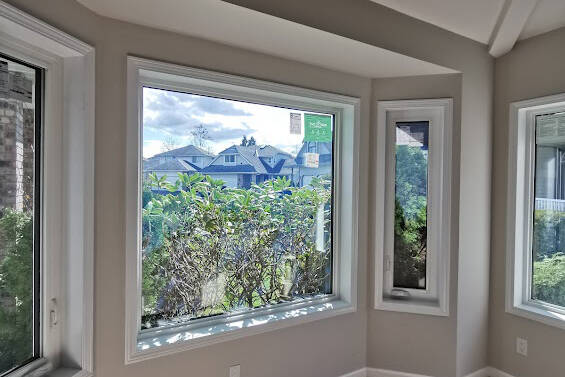Windows In Home Design

Windows in Home Design: A Comprehensive Guide
Windows play a crucial role in home design, not only providing natural light and ventilation but also enhancing the aesthetics and functionality of a space. This comprehensive guide delves into the various aspects of windows in home design, including their types, advantages, disadvantages, and the process of selecting and installing them.
Types of Windows
Windows come in a wide variety of types, each with its own unique characteristics and applications:
Casement Windows: Hinged on one side, casement windows open outward like a door, providing excellent ventilation and a wide view.
Awning Windows: Hinged at the top, awning windows open outward from the bottom, allowing for ventilation even during rain.
Double-Hung Windows: Consisting of two vertically sliding sashes, double-hung windows offer flexibility in ventilation and can be easily cleaned.
Slider Windows: Featuring two horizontally sliding sashes, slider windows provide a wide opening and are easy to operate.
Bay Windows: Projecting outward from the wall, bay windows create a cozy nook with increased natural light and a panoramic view.
Bow Windows: Similar to bay windows, bow windows have a curved shape, providing a wider view and more natural light.
Picture Windows: Fixed in place, picture windows offer a large, unobstructed view of the outdoors.
Transom Windows: Placed above doors or windows, transom windows provide additional light and ventilation.
Skylights: Installed on the roof, skylights bring natural light into interior spaces that lack windows.
Advantages and Disadvantages of Windows
Windows offer numerous advantages:
Natural Light: Windows allow natural light to enter a space, reducing the need for artificial lighting and creating a more inviting atmosphere.
Ventilation: Windows provide ventilation, allowing fresh air to circulate and reducing indoor air pollution.
Views: Windows offer views of the outdoors, connecting the interior to the exterior and creating a sense of spaciousness.
Energy Efficiency: Energy-efficient windows can help reduce heating and cooling costs by insulating the home and reducing air leakage.
Aesthetics: Windows can enhance the aesthetics of a home, adding architectural interest and curb appeal.
However, windows also have some disadvantages:
Cost: Windows can be expensive to install and maintain, especially larger or custom-made ones.
Security: Windows can be a potential security risk if they are not properly secured.
Heat Loss: Windows can allow heat to escape during winter months, increasing heating costs.
Maintenance: Windows require regular maintenance, such as cleaning, painting, and weatherstripping.
How to Choose and Install Windows
Choosing and installing windows involves several steps:
Determine Needs: Consider the size, shape, and style of windows that best suit the space and your needs.
Select Type: Choose the type of window that meets your functional and aesthetic requirements.
Consider Energy Efficiency: Look for windows with high energy efficiency ratings to reduce energy costs.
Hire a Professional: It is recommended to hire a qualified contractor for professional installation to ensure proper fit and functionality.
Maintenance: Regularly clean, paint, and weatherstrip windows to maintain their performance and longevity.
Conclusion
Windows are an integral part of home design, providing natural light, ventilation, views, energy efficiency, and aesthetic appeal. By understanding the different types of windows, their advantages and disadvantages, and the process of selecting and installing them, homeowners can make informed decisions that enhance the comfort, functionality, and beauty of their homes.
FAQs
Q: How often should I clean my windows?
A: Windows should be cleaned at least twice a year, or more often if they are exposed to dirt or pollution.
Q: How can I improve the energy efficiency of my windows?
A: Install energy-efficient windows, add weatherstripping, and use curtains or blinds to reduce heat loss.
Q: What is the best type of window for a bedroom?
A: Casement or double-hung windows are good options for bedrooms, as they provide ventilation and privacy.
Closing Statement
Windows are a valuable investment in any home, providing numerous benefits and enhancing the overall quality of living. By carefully considering the factors discussed in this guide, homeowners can make the right choices when it comes to windows, creating spaces that are both comfortable and beautiful.
Disclaimer
The information provided in this article is for general guidance only and should not be considered as professional advice. It is recommended to consult with a qualified contractor or architect for specific advice on window selection and installation.